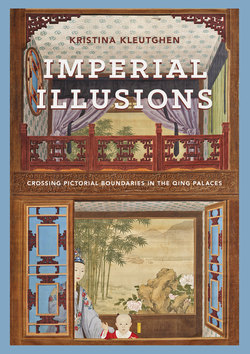Читать книгу Imperial Illusions - Kristina Kleutghen - Страница 74
На сайте Литреса книга снята с продажи.
Оглавление(1764–1849) compiled circa 1797 to 1799, Nian is described as “one who took Western calculation to be of vital importance” (yi Xiren cesuan zhi qieyao zhe).23 Biographies lists him as the author of The Measure of Calculation (Cesuan daogui, 1718) on trigonometry;24 Table of the Myriad Square Roots and Cube Roots (Wanshu pingli fangbiao); Logarithmic Tables (Duishu biao) and Extensive Use of Logarithms (Duishu guang yun) on logarithmic calculus; and Brief Guide to Polyhedron Proportions (Mianti bili bianlan, 1735) on calculating the area of polygons and the volume of polyhedrons, also using logarithmic calculus.
Nian was most active during the Yongzheng reign, but most of his life and his formative years were spent under the Kangxi reign; consequently, the Kangxi intellectual and cultural environments profoundly affected his work.25 In late imperial China, approaches to knowledge and understanding the natural world emphasized investigating things and extending knowledge (gewu zhizhi) in order to understand the myriad things (wanwu), which encompassed visible, tangible objects as well as immaterial mental and physical phenomena, historical and natural events, unknown or inexplicable occurrences, and otherworldly anomalies. Investigating things (gewu) revealed universal principles (li) for the real world, and fathoming these principles (qiongli) using the Confucian classics was termed “Learning of the Way” (Daoxue).26 Kangxi was particularly interested in fathoming the principles and the investigation of things as part of “practical learning” (shixue): a new interest in military training, strategy, archery, boxing, mechanics, mathematics, astronomy, history, and chronology that he promoted in the early Qing.27 Such areas of practical learning were the subjects on which a bannerman such as Nian would have focused, providing fertile soil in which Western mathematics could take root. All of the mathematical subjects on which Nian published were included in Kangxi’s Imperially Composed Essence of Numbers and Their Principles (Yuzhi shuli jingyun, 1722, hereafter Essence of Numbers). This vast mathematical compendium was based on the Jesuits’ lecture notes produced for Kangxi’s mathematics tutoring in the 1690s, but published by Kangxi’s Office of Mathematics (Suanxueguan) without Jesuit editorial contributions.28 Historically, mathematics was one of the Confucian Six Arts (liuyi, along with rites, music, archery, charioteering, and calligraphy) mentioned in the ancient classic The Book of Rites (Liji), but this implied amateur accomplishment rather than well-developed ability.29 Mathematics was practiced throughout Chinese history, but the increased seventeenth-and eighteenth-century interest in it was unprecedented, and is often attributed to the Jesuit introduction of Western mathematics and astronomy alongside court sponsorship.
Only three months after Nian published The Study of Vision, he also published the Brief Guide to Polyhedron Proportions, an unstudied text that not only exemplifies Nian’s predominantly mathematical leanings but also is very closely related to The Study of Vision in its presentation of how to understand specifically three-dimensional things.30 The Brief Guide therefore offers a glimpse into the mathematics of how Nian conceptualized the representation of objects, as well as his deep understanding of the complex mathematics that supported illusionistic painting and his commitment to spreading that knowledge. Nian begins
